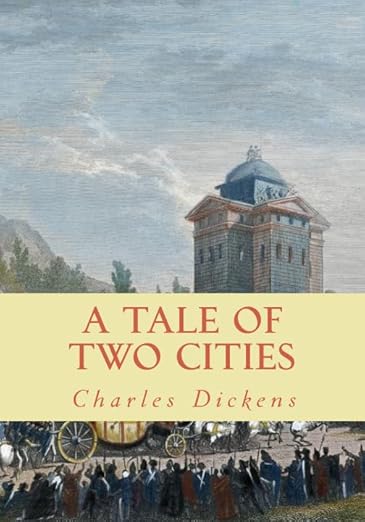Welcome back, literary aficionados! Today, we’re delving into Charles Dickens’s classic novel, A Tale of Two Cities. Set against the tumultuous backdrop of the French Revolution, this tale of sacrifice, resurrection, and duality captures the best and worst of human nature. Let’s explore the world of A Tale of Two Cities together!
Introduction
Published in 1859, A Tale of Two Cities is one of Charles Dickens’s most famous works, known for its unforgettable opening line, “It was the best of times, it was the worst of times…” The novel contrasts life in Paris and London during the late 18th century, drawing a vivid picture of the societal upheavals of the French Revolution. Dickens’s exploration of themes such as sacrifice, redemption, and the struggle between good and evil continues to resonate with readers today. Join us as we navigate the intricacies of this literary masterpiece.
Quick Summary
A Tale of Two Cities unfolds across two cities—Paris and London—before and during the French Revolution. The story begins with Dr. Alexandre Manette’s release from eighteen years of wrongful imprisonment in the Bastille and his reunion with his daughter, Lucie. As they rebuild their lives in London, they become entangled with Charles Darnay, a French aristocrat who renounces his title and moves to England to escape his family’s oppressive legacy. The novel follows these characters as they navigate the perils of the revolution, culminating in a dramatic climax where acts of courage and sacrifice unfold.
Character List and Descriptions
Charles Darnay: A French aristocrat who rejects his family’s cruel treatment of peasants and moves to England. Despite his efforts to distance himself from his lineage, he finds himself drawn back to France during the revolution, where he faces grave danger.
Sydney Carton: A brilliant but disillusioned English lawyer who initially appears cynical and unambitious. Carton undergoes a significant transformation throughout the novel, ultimately displaying a deep sense of love and sacrifice.
Lucie Manette: The compassionate and loving daughter of Dr. Alexandre Manette. Lucie’s kindness and devotion to her father and Charles Darnay make her a central figure around whom much of the novel’s action revolves.
Dr. Alexandre Manette: A former prisoner of the Bastille who struggles to recover from his long and unjust imprisonment. His return to sanity and subsequent role in the lives of Lucie and Charles highlight themes of resurrection and the long-lasting impact of trauma.
Madame Defarge: A vengeful and ruthless revolutionary leader in Paris. She is driven by a deep-seated hatred of the aristocracy, particularly the Evrémonde family, whom she blames for her family’s suffering.
Jarvis Lorry: A dedicated and kind-hearted banker at Tellson’s Bank who aids the Manettes throughout the novel. Lorry represents loyalty and compassion amidst the chaos of the revolution.
Mr. Stryver: A successful but arrogant lawyer who is a colleague of Sydney Carton. He serves as a foil to Carton, emphasizing the latter’s journey toward redemption.
Themes
Sacrifice and Redemption: Central to the novel is the theme of sacrifice, particularly exemplified by Sydney Carton’s ultimate act of selflessness to save Charles Darnay. Carton’s journey from despair to redemption underscores the power of love and sacrifice to transform lives.
The Duality of Human Nature: Dickens explores the duality of human nature through characters who embody both good and evil qualities. This theme is mirrored in the novel’s setting—Paris and London—representing the extremes of society during the revolution.
Resurrection and Transformation: The theme of resurrection is prevalent throughout the novel, from Dr. Manette’s release from prison and return to life to Sydney Carton’s moral awakening. These instances of renewal highlight the potential for change and growth in even the darkest circumstances.
Revolution and Social Injustice: Dickens paints a vivid picture of the injustices that led to the French Revolution, depicting the desperation and anger of the oppressed. However, he also critiques the violence and excesses of the revolutionaries, presenting a nuanced view of the cycle of oppression and revenge.
Love and Family: The bonds of love and family are central to the novel’s narrative. Lucie’s relationship with her father and her love for Charles Darnay drive much of the story, illustrating how personal connections can endure through turmoil and hardship.
Conclusion
A Tale of Two Cities is a powerful exploration of sacrifice, redemption, and the complexities of human nature. Through its rich characters and gripping narrative, Dickens’s novel invites readers to reflect on the themes of love, justice, and transformation. Thank you for joining us on this literary journey!
Stay tuned for more literary guides and discussions here. Happy reading!

